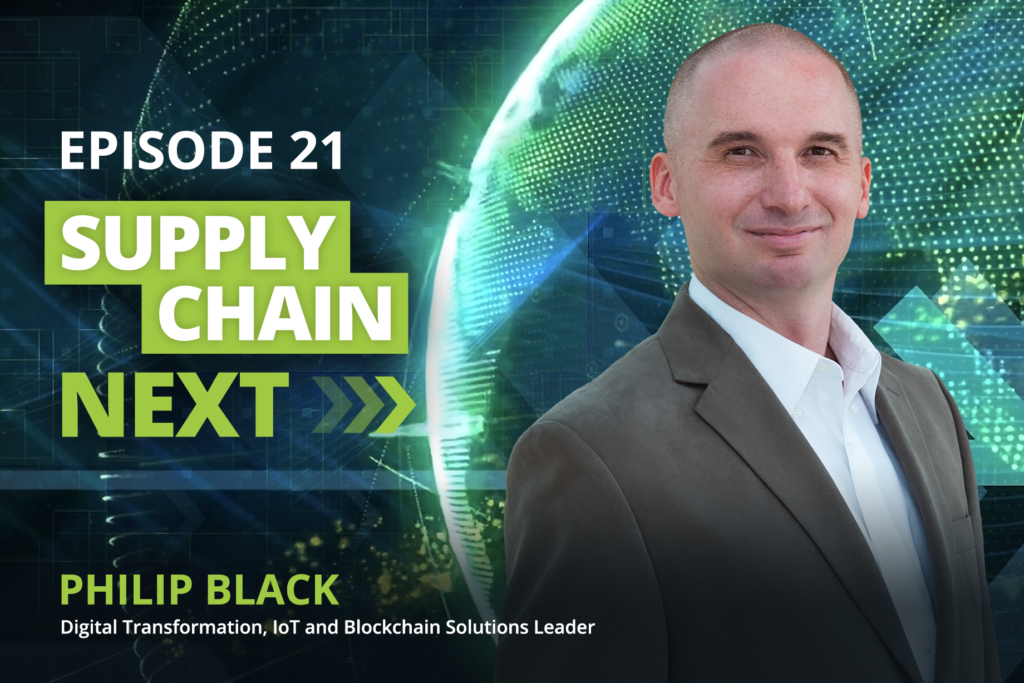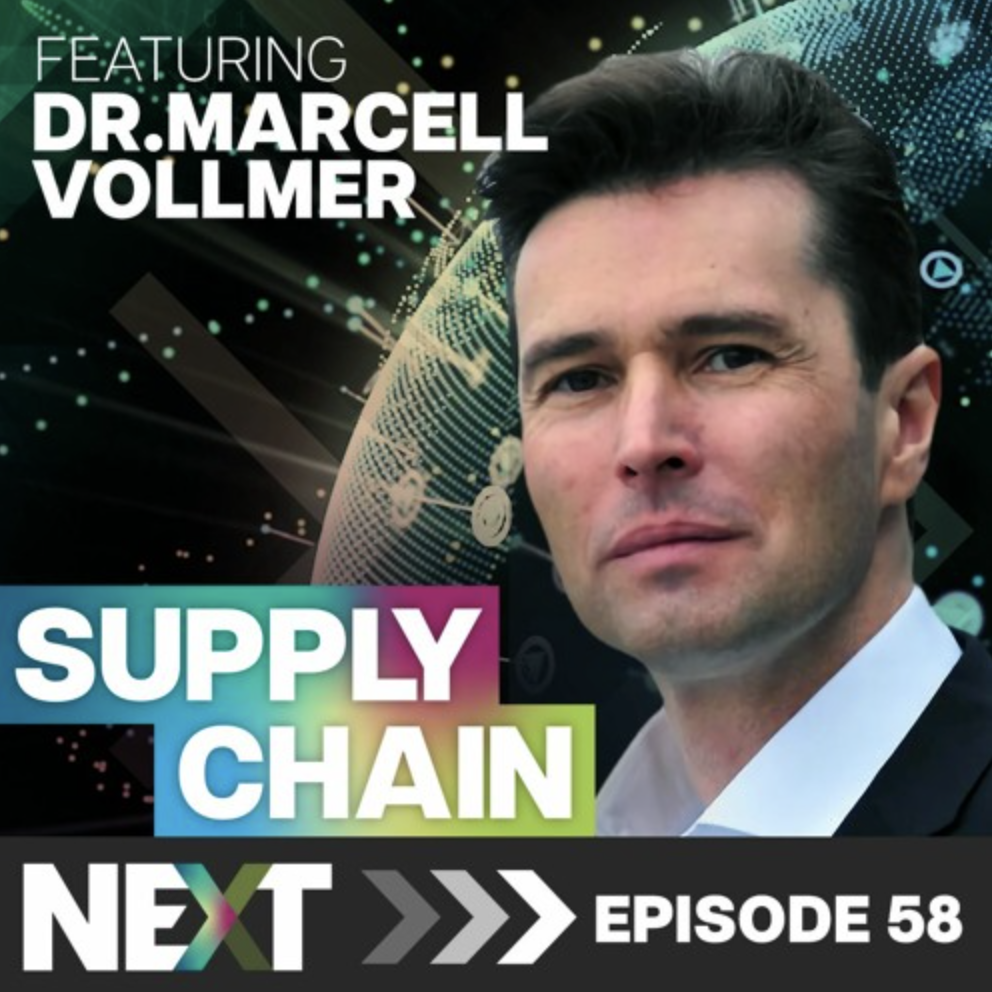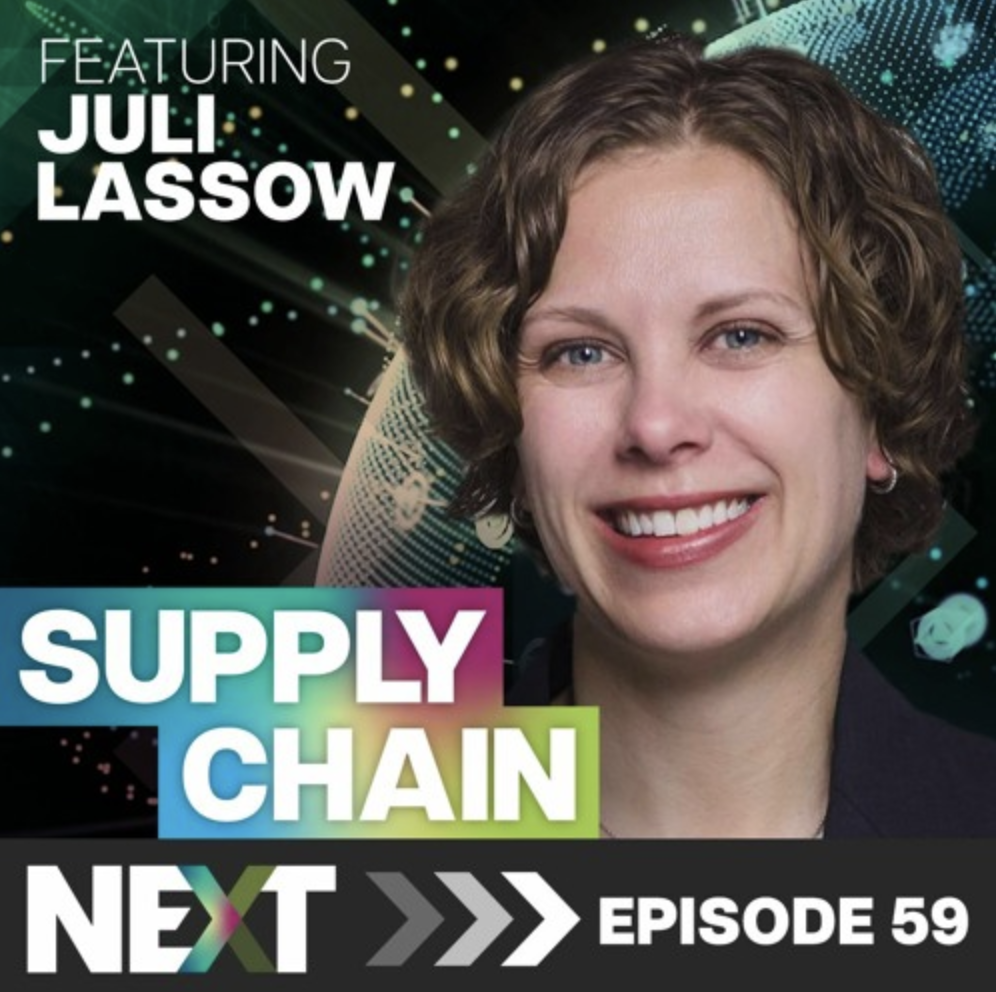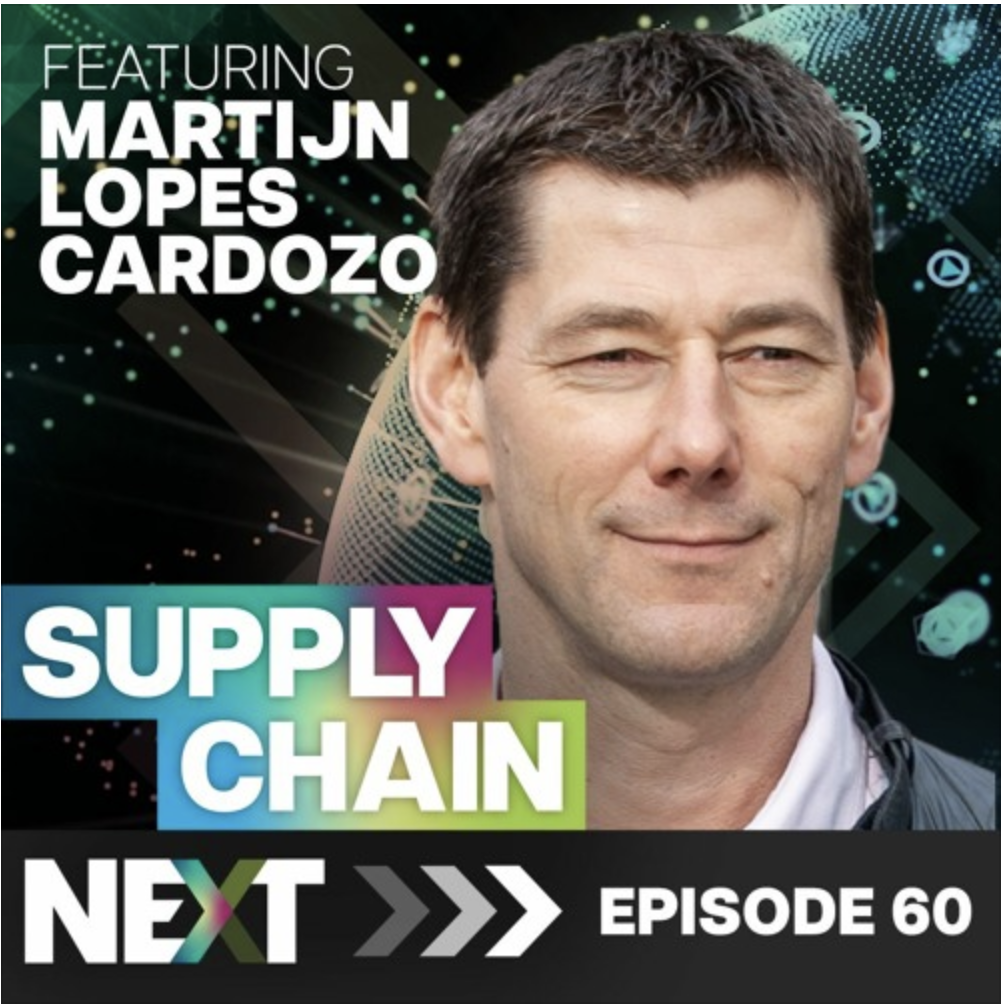Episode 21
Podcast: Digital Solutions Innovator Philip Black
Philip Black is a proven technology implementation leader in several industries, including energy. As the global emerging solutions lead at Wood PLC, he currently specializes in developing blockchain solutions for multiple industries including infrastructure, mining, industrial, and power.
He has implemented real-time monitoring systems for clients in the United States and the Middle East. He has also pioneered applications using Internet of things (IoT), machine learning, software development, systems integration, and data analytics with the goal of increased profitability for enterprise operations.
On episode 21 of Supply Chain Next, Philip Black talks with host Richard Donaldson about digital transformation, leveraging the benefits of blockchain, and science fiction. You can listen to the podcast below, or watch the video version on YouTube.

Highlights from the conversation
I’m just gonna jump right in and say “Phil Black, who are you? Where’d you come from? People would like to hear how you got started and how did you get to where you are today?”
- I’m a chemical engineer. I did some work making tires with Goodyear after I moved to the midwest. When I moved to Houston I did work with a company that was trying to create digital twins before the concept formally existed.
- I looked at all the different systems within a plant and tried to create a holistic approach to how everything fit together from a data point of view. I would then write the code that processed specific information in order to give the operators at the refinery usable data.
- This was back in 2001 when I started in Houston. Myself and a group of about 15 engineers were excited to start collecting this information and to begin to process it.
We wanted to take the information we collected to make huge decision trees so we could give people more comprehensive advice.
2001 was before the Internet of things (IoT) was a term. This was before digital twin was a term. What was the goal at that point, trying to enable this type of technology?
- The goal was to increase efficiency within operations. You have multiple shifts at a plant, and the day shift typically has the most experience. The oil and gas industry was aware that most of the experienced people were going to be retiring soon so they wanted to collect that information and encapsulate it.
- Our goal in collecting this data was to get the people on the other shifts up to the same experience level that the day operators had.
At that time it seems you were being more operationally focused as opposed to supply chain focused.
- Yes, we were looking at the heat exchangers, looking at the pumps, looking at the towers, looking at the reactors. I was focused on our operations only at that time from a chemical engineering viewpoint.
Was there any conversation around the supply chain of that plant after it was digitally enabled in that way? For example, this pump is failing, let’s get on ordering another?
- Yes, we did some work on trying to detect equipment failures. The problem is that at the time the processing power was insufficient to gain a holistic picture of the plant.
- It turned out that it was rigorous and expensive to collect data the way we were doing it. It could be done but it was decided that the cost wasn’t worth it.
- Collecting the information did help with better planning for maintenance and the other tasks with running the plant, including preventative maintenance.
So how did that morph into what you got into next?
- I then moved to Wood PLC and started working as a programmer, writing the code and interfaces used to transfer data to and from multiple systems. I tried to create a standardized way to collect information from many different systems to present a more unified view of our operations.
- I then moved back and forth between coding and working in the field (implementation). That helped me to gain a greater understanding of the whole, which in turn helped me to write better systems.
- Then I moved into a leadership role in which I focused on environmental concerns, and we developed the Wood ENVision platform, which is now an app on the Microsoft Store.
- ENVision presents a unified view of environmental monitoring. For example, how are we operating within our permits, which were written by politicians, not engineers.
We gave our clients the ability to do their monitoring one time and in one place to give them real-time solutions and advice to help them prevent potential negative situations such as greenhouse gases escaping from one place or another.
If I’m getting my numbers right this was developed about 10 to 15 years ago and you were one of the original guys working on it?
- Yeah, it’s been quite a journey. It has changed many times as we had to learn what our clients needed. We collected data from them and made changes over the years. We then moved into the marketing side to set the direction we needed to go.
- It was a different era back then when I began development on ENVision. All of the data was on the premises in big server racks. Moving over to the cloud enabled us to share the platform with so many more people.
Is the platform providing visibility for operations? Is that the core focus for what ENVision started as? Or has it changed over time?
- I’d say it’s expanded. Our company has been historically 80% oil and gas so as we entered into other industries (and countries) ENVision grew with us.
- We recently did a project for the Saudi Arabian government. We enabled them to track greenhouse gases from various emitters across a wide area.
- We expanded outside of oil and gas and that has helped us to evolve the ENVision platform.
Are you still heavily involved with this platform?
- Not anymore. I’ve handed off the project management to others. I still help out with specific implementations but I am not involved in the day-to-day development. We have a special group who does that now.
- My focus has expanded to emerging technologies such as blockchain, machine learning, IoT, and robotics. Blockchain is my core focus.
- Blockchain doesn’t become really useful until it’s combined with machine learning, IoT, and robotics because it allows a new way of storing information. It makes it easy to find out who put the information in because you can’t remove information, and the third party trackers know who has been in and out of the database.
What is the core foundation a company needs at the beginning in order to get to the higher level tech later on?
- Different companies have different systems that do many things and there are different domain experts who specialize in different areas. The experts know how to process certain types of information. Bringing them all together is how the real analysis begins.
- For me, digital twinning is the ability to collect all of the information from those different systems into a central point so it can be contextualized, analyzed, and then applied to operations going forward. As well, it’s about creating the ability for people from other domains to understand the aggregated information in a usable way.
- APIs are much more common now so it is much easier to get information out of any system (via programming your way into it). Once you have the data from all of the systems you’re analyzing, it is a much easier task to apply higher level tech like machine learning.
- One of the biggest problems companies have in the digitization of their data from different systems is “how do we get all of this information into one place so we can analyze it?”
- The key is to be able to centralize all of this information from these different legacy systems.
So first you have to run an assessment of all of your different systems beginning with: where does my data live? And then you have to find a place to centralize all of that data. Without doing that you’re left with this wide disparate network of things that can’t talk to each other. It begins by centralizing.
- Yes, that’s correct. Once there is a centralized location for the data to go you can use sensors, like within IoT, and begin collecting into the cloud. You don’t even need cables, this process can happen wirelessly. Then you can begin to process the information. This is when the value of digitization becomes clear.
You’ve been with the Wood PLC for 16–17 years. Can you tell us who Wood PLC is and how you fit into that?
- Wood has traditionally been seen as an engineering, procurement and construction (EPC) group. We used to concentrate on operations so we would go into a situation where an investor or venture capitalist bought a plant and we would say, “OK, you have the money and we know operations.” Then they subcontract the whole operation out to us since we know how to run the plant safely and efficiently.
And the ENVision platform was fundamental to that process, right? I feel that the platform was a digital manifestation of the Wood value proposition?
- Yes, ENVision is an extension of Wood and how we provide solutions for our clients.
- We are an engineering and design company so if you want to build something, we’ll design it and help you build it. Also, since we have also been on the implementation side of things we have deeper insight as to what kind of challenges companies face when they start out to build something big.
- Meanwhile, we have gained experience in running multiple operations at once so we have a unique perspective that brings a special kind of value to those we work with.
- Wood PLC is now focused on decarbonization and the energy transition to renewables.
All of these new digitization technologies and processes can be overwhelming. Where do we start?
- The fundamental step that has to be taken, and the one that is hard to get excited about, is mapping the data.
- Mapping the data is challenging, it’s key, you have to know what you have. If you don’t know what you have and how it fits together you can never really get anywhere.
Do you agree with the statement that the data has to map to the assets in particular? Data is one thing, but if it’s not tied to something physical then I miss the whole point of what’s going on.
- I would say it this way: it’s a fundamental mapping of your physical to digital. Everybody has physical assets and a digital system. The question is, what are those physical assets doing alongside the digital system?
- For example, you have a physical asset and there are five different systems interacting with that asset in unique and specific ways. If the information is not centralized new people can’t join in on the operation without hardship. So you have to do that mapping in order to determine the role of each system, who the owners are, and how it all fits together.
- As you map out the different characteristics of your systems and assets you need to figure out which system has the best source of information that meets your current requirements.
- Every system has strengths and weaknesses. How do we get the best information from each system into a centralized location? This is the key question.
- It’s difficult to get a usable snapshot of the whole system from top to bottom. You can never do everything. This is where a lot of digitization efforts get lost. Once you have the best, most needed information, you can do the engineering to figure out the gaps in your operations.
So another way to say this would be: the first step to digitization is to have a digital twin strategy. Then once you get there then all the cool stuff happens. The data is pouring in to a centralized location, now you can do the analytics, the machine learning, and the AI. Throwing machine learning and AI at things that are not connected is pointless.
- Yes, it can only get you 10% toward the direction you want to be (without digitization).
- There needs to be a two-way connection between your systems and the domain experts so they can use the information efficiently, and this creates value for everybody, but full digitization is where you want to be to get a much faster and more powerful view of the whole picture. This can save time for the domain experts.
Going into where you are today, as somebody who is looking at new technologies and where to apply them, what are you excited about going forward in the context of digitization?
- I think blockchain has potential but there are many limiting factors preventing the usefulness of it.
- First, blockchains don’t talk to each other. If two companies, each with their own blockchain, begin working together there’s no way to unite the blockchains. This is limiting the mass adoption of blockchain.
- Blockchain is changing so fast that it’s difficult to standardize across a large enterprise because in six months there will be a completely new version.
You just described the interoperability of data between different blockchain databases. The first question I’d ask of that is: would that be the most effective use of blockchain itself? Or are we overcomplicating what blockchain is really about as a distributed database that ensures data quality thru third party verification?
So if somebody told me they wanted to link up multiple blockchain databases I would have to ask why are they trying to do that?
- Here’s an example. Walmart is running their blockchain for lettuce. So what happens if a supplier who provides lettuce is brought in and they have their own blockchain for their own operations, how do you synchronize the two blockchains? The value in various blockchains is currently siloed. This is why interoperability is important.
- Going back to the database world, right now you have Oracle, SQL, etc., and at a fundamental level they are similar. You can move data from one database provider to another comparatively easily versus blockchain.
I’ll be slightly controversial here: I don’t think blockchain was ever meant to be shared easily between databases. The architects never envisioned it as being part of a multiple database strategy. Sharing data between databases was not the intent.
There are use-cases for the different types of databases, so one needs to ask: is this a Philips screwdriver or a Swiss Army knife?
- That’s a great analogy. Do you need the database for one specific task or do you need the flexibility for many different tasks?
At the end of the day blockchain is just another database. It’s different from the other, more conventional databases, but it’s just a database, which is essentially just a spreadsheet on steroids.
Blockchain is like a “Google sheet” with particular rules built in. It’s a shared spreadsheet.
Yes, you can write to it but you can’t remove from it. That’s what enables blockchain to have such a detailed snapshot of the stored data. It brings the rigor of accounting to a database but with more types of data, not just financial information.
Since nothing can be removed from a blockchain the incentive to input data correctly the first time is paramount. Also, accountability is introduced since whoever made the entry can be tracked.
This may improve the quality of data over time for the reasons you just mentioned?
- It definitely will. This removes the “policing” of the database since you know that everybody is maintaining the quality because they can be held accountable. The peer pressure becomes positive.
Let’s think about the future of technology. What do you see as innovative or disruptive in that space going forward?
- In my mind the next frontier is autonomous technology. In the world of robotics we have mastered the ability for a robot to do one repetitive task. With the knowledge we have gained from IoT and machine learning we can move to the next step where robots can do multiple tasks on their own, faster, safer, better.
- Robotics worries people about job security. But the next step for humanity is going into space. We are going to need autonomous systems that can take care of us during our long journey in space.
I am a huge fan of space exploration and a huge fan of what Elon Musk is doing, and I’ve even gone so far as to write about what it means to have a galactic supply chain versus an Earth-based supply chain. That’s the thing that NASA and Elon Musk are thinking about: what do we need for a supply chain between Earth, the space station, and Mars?
Let me ask you, are you a science fiction fan?
- Yes, I have read many of the popular science fiction writers and have also been following the Amazon Prime show The Expanse.
- One author wrote a great series asking: what would happen if an AI developed a personality?
I think that show has laid the groundwork for what the next 100 years will look like for humanity as we begin to expand outward into our solar system. So, connecting back to our current situation, what do you see coming up for 2021?
- I feel that once the COVID-19 cases start reducing and the vaccines start proving to be effective we’ll see a period where there will be a very high amount of technology adoption and deployment.
- We’ve made it through this year of doing things virtually and that forced many companies to do things in new ways, to be more creative. It has helped many people to see productivity and workflow in a new light, especially with the use of new technology which everybody has been forced to learn for the sake of adapting to the new normal.
- In the February before the pandemic, I attended a conference at Microsoft. It was impressive to see what they envision for the future. I think that with all of these new developments in technology we will be able to deliver energy in better ways in the coming years. And that’s what all of this is about.
- We can also get better with tackling climate change. I think it’s a time when even the investors will take notice and take action toward decarbonization with renewables and conventional energy sources.
I think you’re right and I would broaden the aperture. Affecting climate change is a focus on sustainable practices and one way of getting there is circularity in supply chain.
- I really like the focus on circularity that you are bringing to supply chain. This is going to help us get to a more sustainable future.
I appreciate that. However, we are trying to convince large companies that they can increase their profit by making their supply chains circular, by selling off their used and unused surplus assets, and unlocking billions of dollars for themselves.
Getting back to you though, you have such a fresh perspective on digitization and you have done so much more than most people in that area. It’s so fundamental and without that you can’t get to the cool new stuff.
- Thank you. It’s great to talk with interesting people especially when the conversation goes onto such fascinating subjects.
More about Philip Black
Philip Black shares his passion for centralizing technology by speaking at conferences worldwide and publishing articles through various media outlets. He holds a degree in chemical engineering from the University of Kansas and is a licensed professional engineer in Texas.
Philip continues to move toward his goal of digitization and centralization within the world’s enterprise companies. If you would like to know more, or reach out to Philip, you can connect with Philip on LinkedIn.
More Episodes
You can listen to our audio tracks and read highlights for each episode below.
We’ve also started publishing video episodes on our YouTube channel.
058 – Dr Marcell Vollmer – Tech in Supply Chain, and the Sustainability Shift
Supply Chain Next · 058 – Dr Marcell Vollmer – Tech in Supply Chain, and the Sustainability Shift Meet Dr. Marcell Vollmer Dr. Marcell Vollmer, a renowned expert in the fields of digitalization, innovation, and sustainability. Marcell is a sought-after speaker and author that has dedicated his career to helping companies and individuals navigate the rapidly…
059 – Juli Lassow – Revolutionizing Retail, Sustainable Strategies, & the Future of Partnerships
Supply Chain Next · 059 – Juli Lassow – Revolutionizing Retail, Sustainable Strategies, & the Future of Partnerships Juli Lassow ,founder of JHL Solutions Meet Juli Lassow Juli Lassow, an accomplished retail professional, speaker, writer, and sustainability advocate, is the founder of JHL Solutions, a consultancy focused on creating outstanding private-label partnerships. With a deep…
060 – Martijn Lopes Cardozo – Circular Supply Chain
Supply Chain Next · 060 – Martijn Lopes Cardozo – Circular Supply Chain Martijn Lopes Cardozo, CEO at Circle Economy Meet Martijn Lopes Cardozo Martijn, a seasoned entrepreneur, has an impressive track record of establishing prosperous ventures within the realms of software, mobile, and digital media in California. Upon returning to the Netherlands, he…



